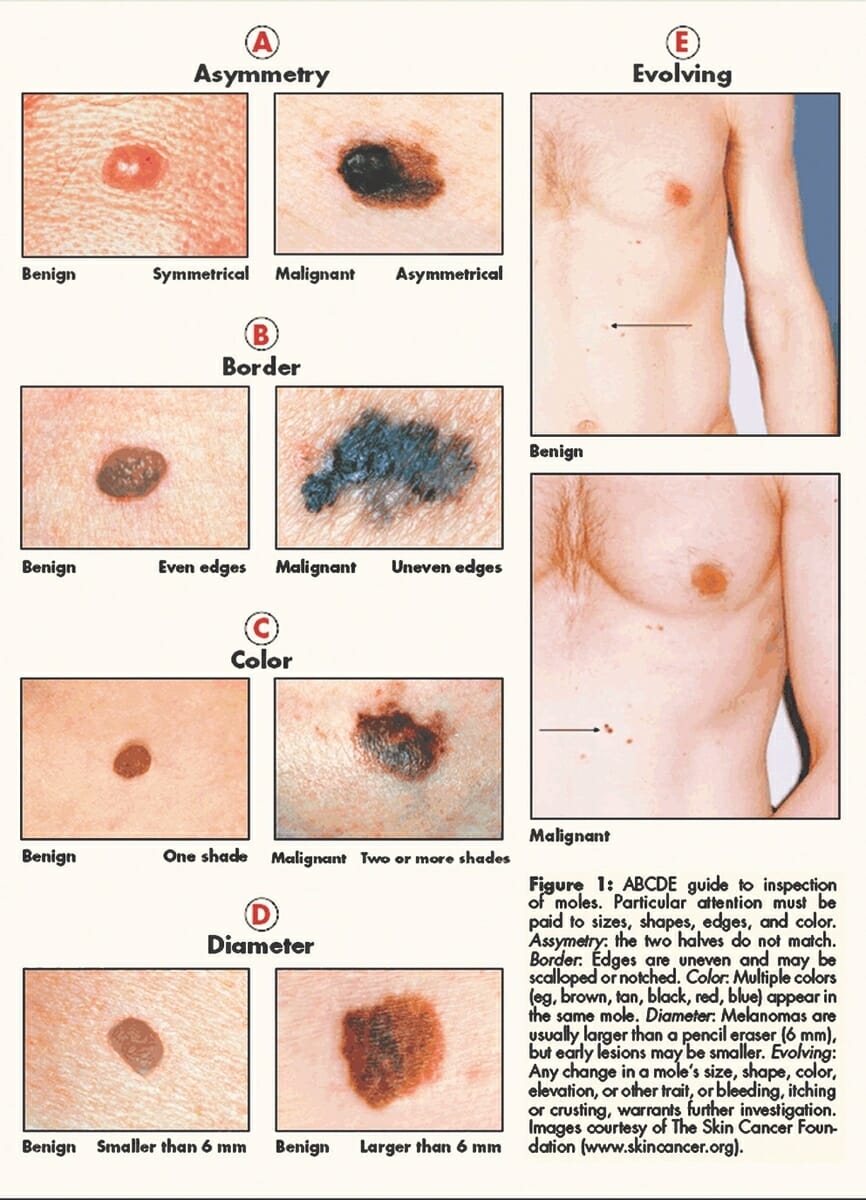Although it accounts for less than 5% of all skin cancer cases, melanoma is responsible for the vast majority of skin cancer deaths. This form of cancer starts in the melanocytes, cells deep in the epidermis, or in moles on the surface of the skin that produce pigment.
Early detection and treatment are critical to prevent this cancer from spreading throughout the body.
Melanoma has several distinguishing characteristics that experts call the ABCDEs. A mole or growth is considered suspicious if:
It’s Asymmetrical, meaning that each half of the growth looks different from the other;
Its Borders are irregular, ragged, or blurry;
Its Color is unusual;
Its Diameter exceeds 6 millimeters, about that of a pencil eraser;
It’s evolved, enlarged, or changed in any way.
If you have a mole (or moles) with any of these characteristics, see your doctor for a thorough skin exam.
Rates of melanoma have been rising for at least three decades. Your risk of developing melanoma is higher if you have:
red or blond hair
green or blue eyes
fair skin
a history of being in the sun a lot, especially as a child
a mother, father, sister, or brother with melanoma.
Features of freckles or moles that raise your risk of melanoma include:
a new mole appearing after age 30
a new mole at any age if it is in an area rarely exposed to the sun
change in an existing mole
one or more atypical moles—moles that look like a fried egg, or moles that are darker than others, or have an irregular border or shape
having 20 or more moles, each larger than 2 millimeters across
having five or more moles, each larger than 5 millimeters across (about the width of a pencil eraser)
freckles caused by being in the sun.
Exclusive content from CARE Magazine







